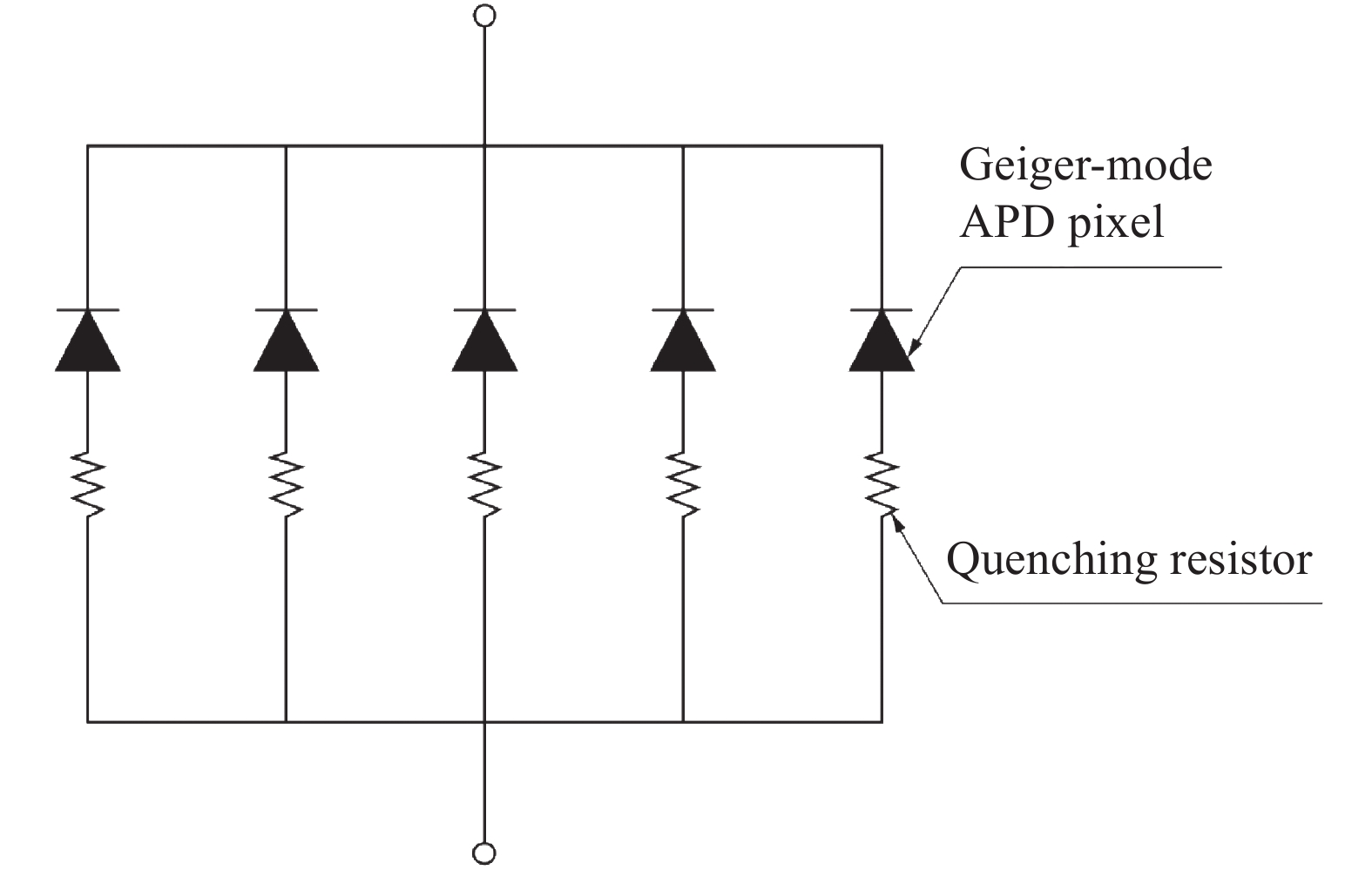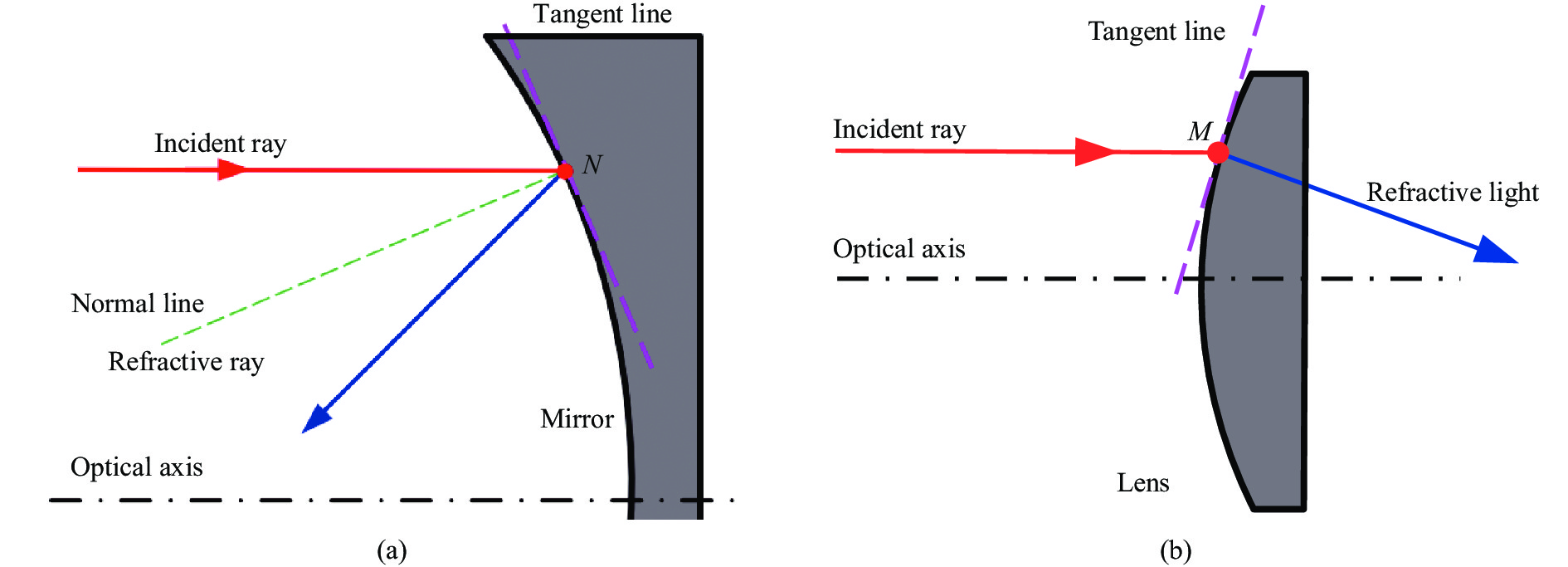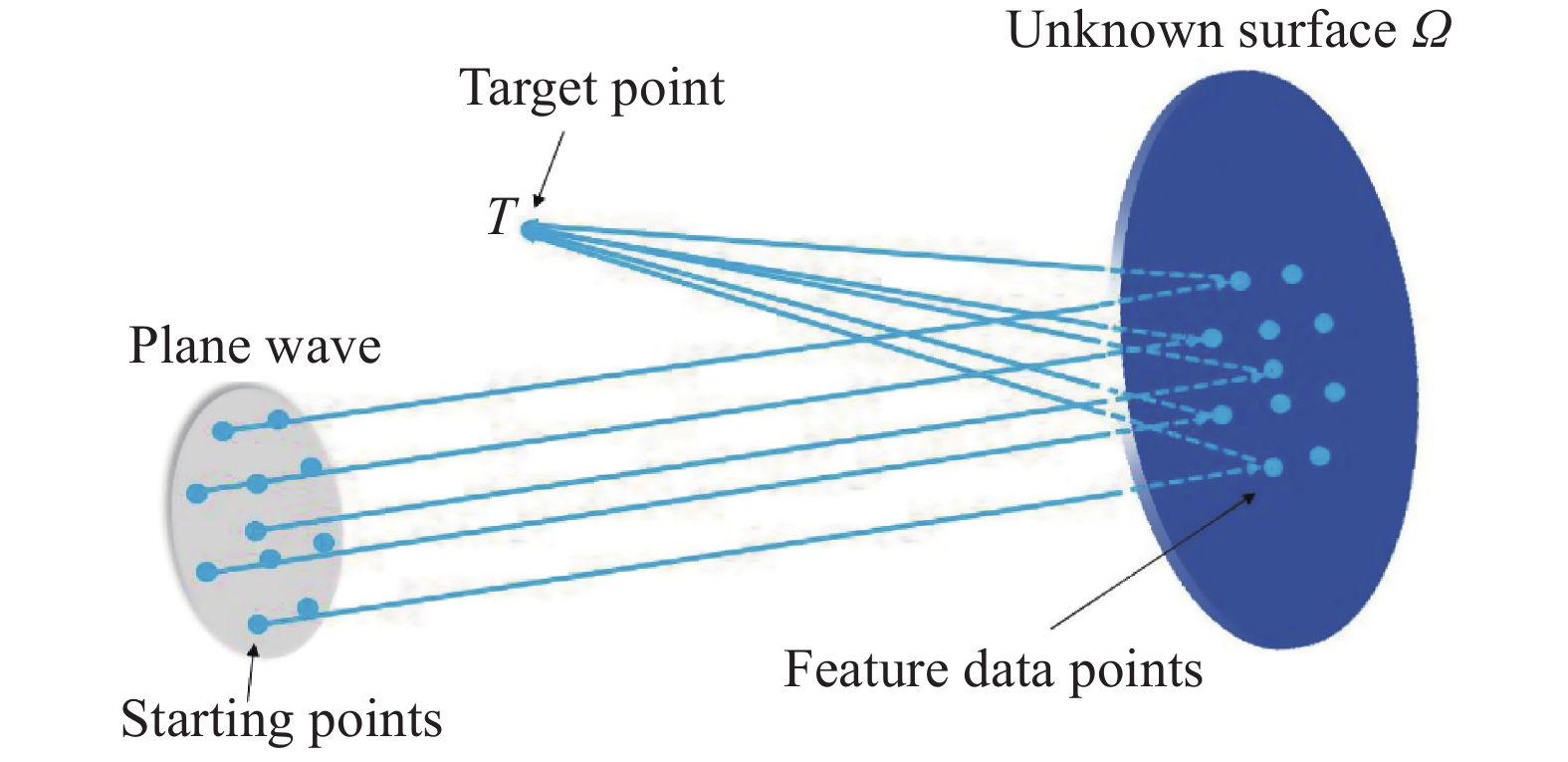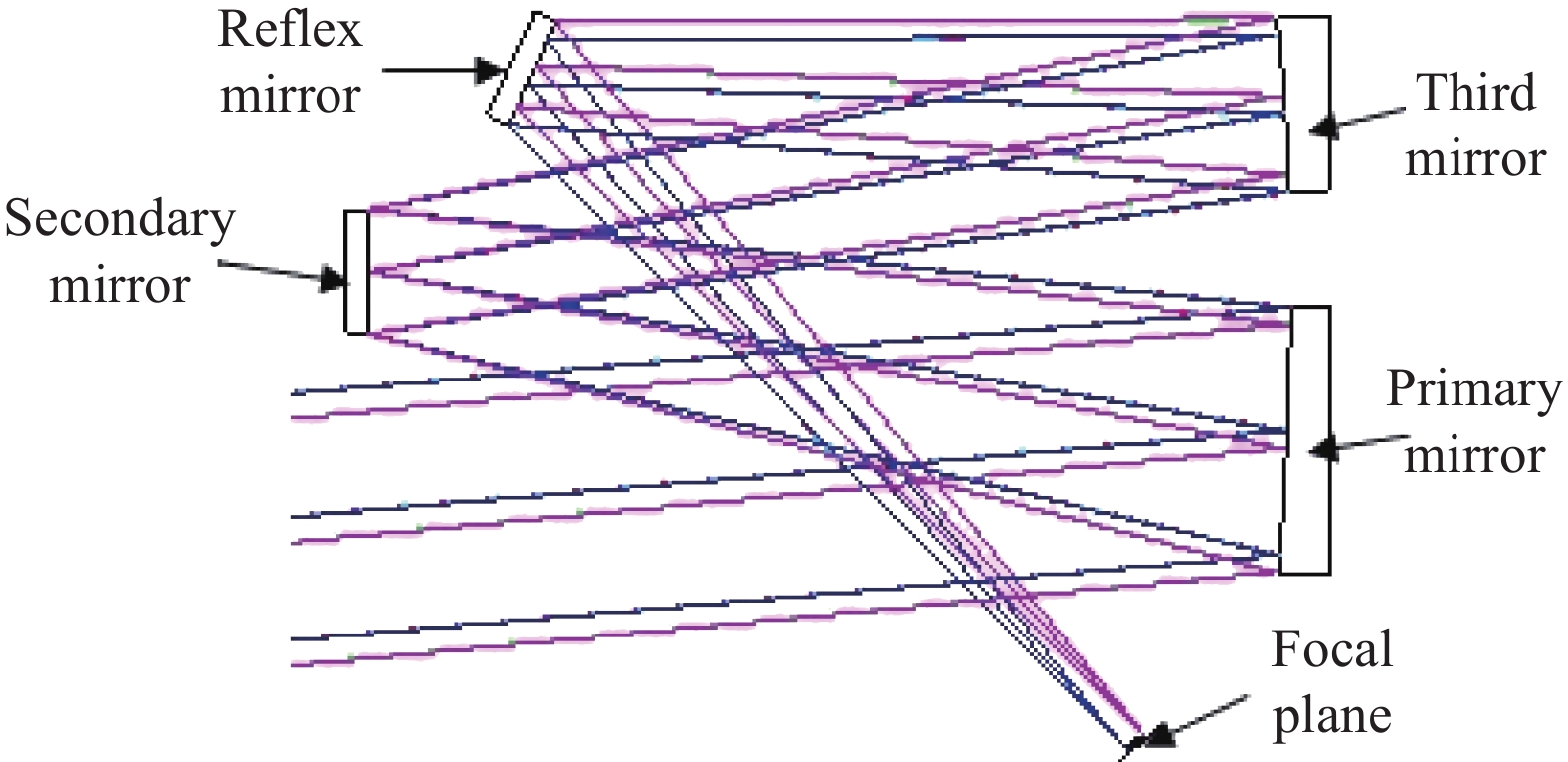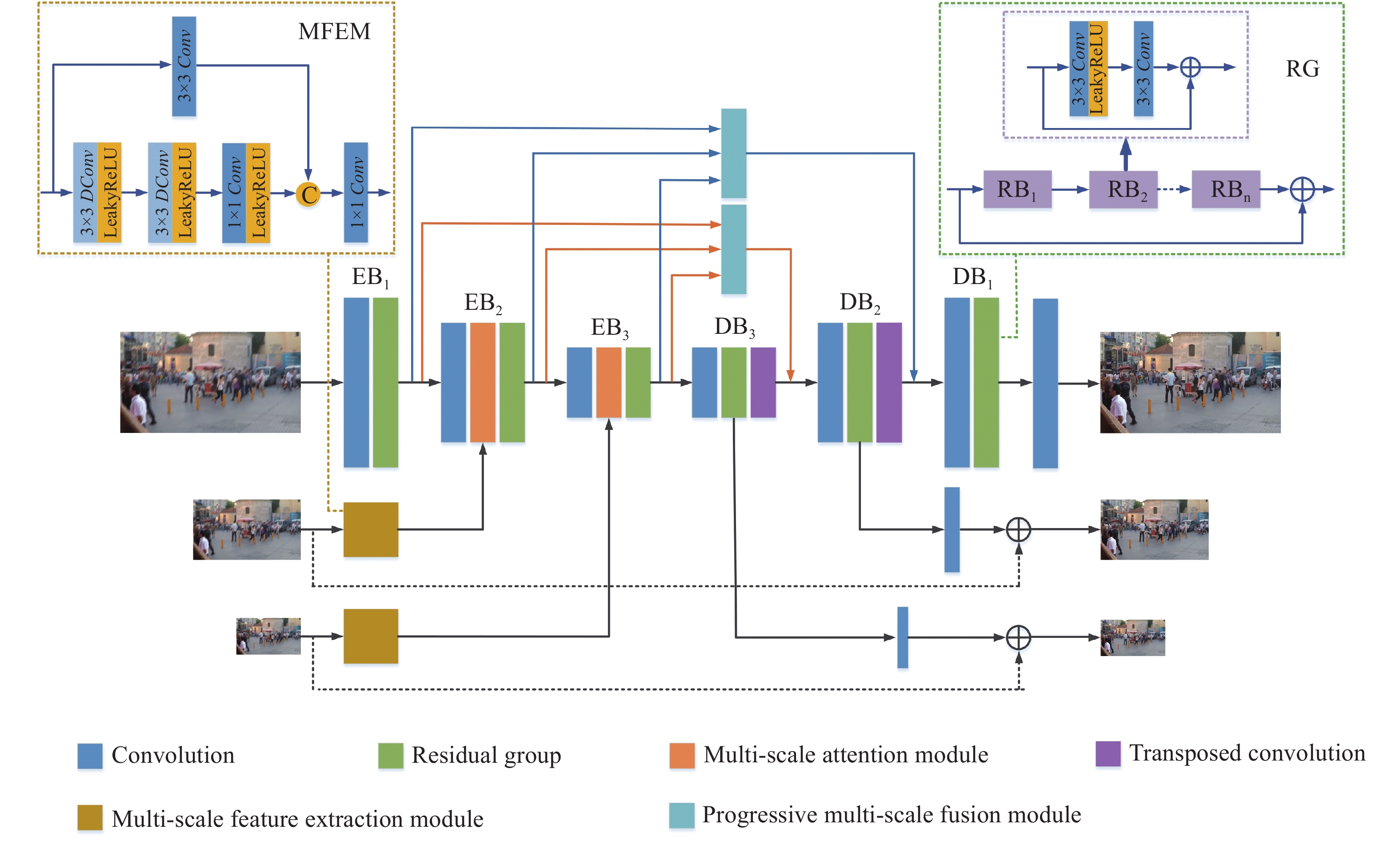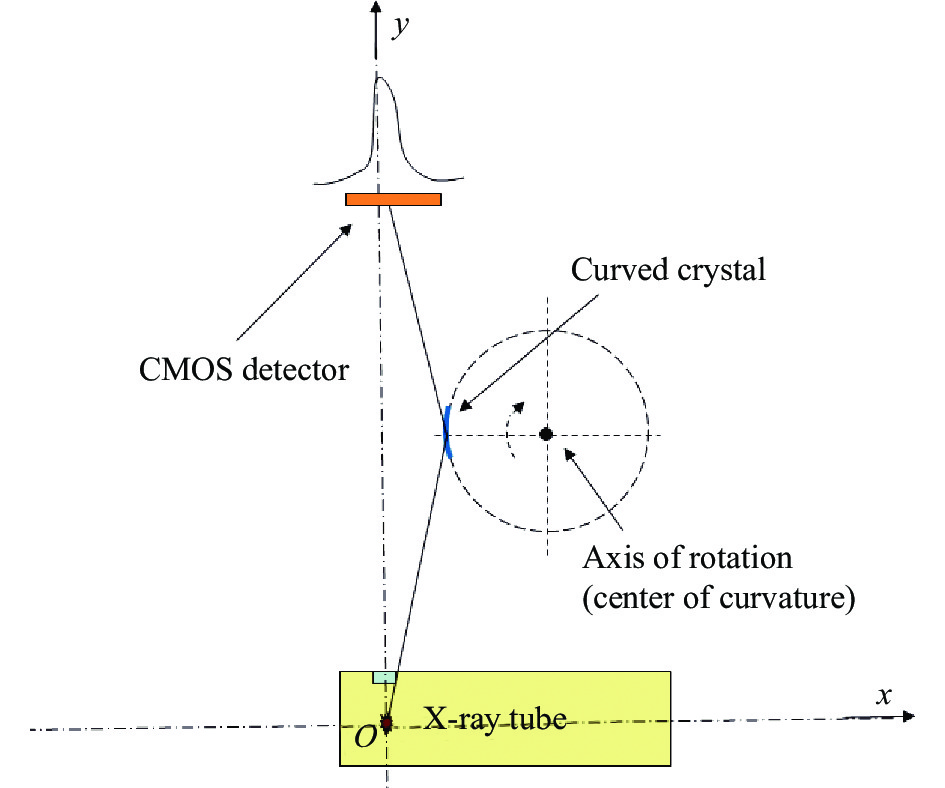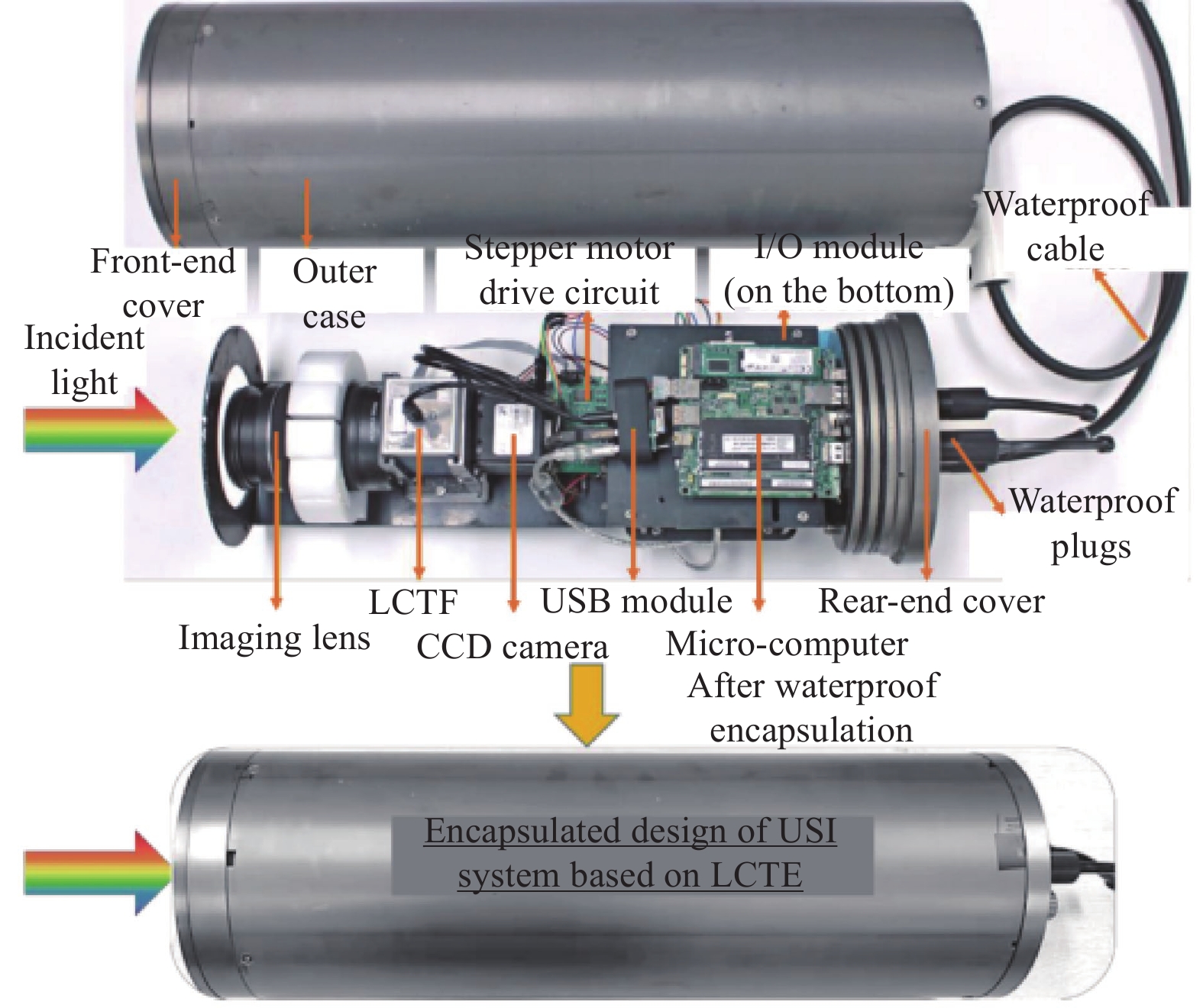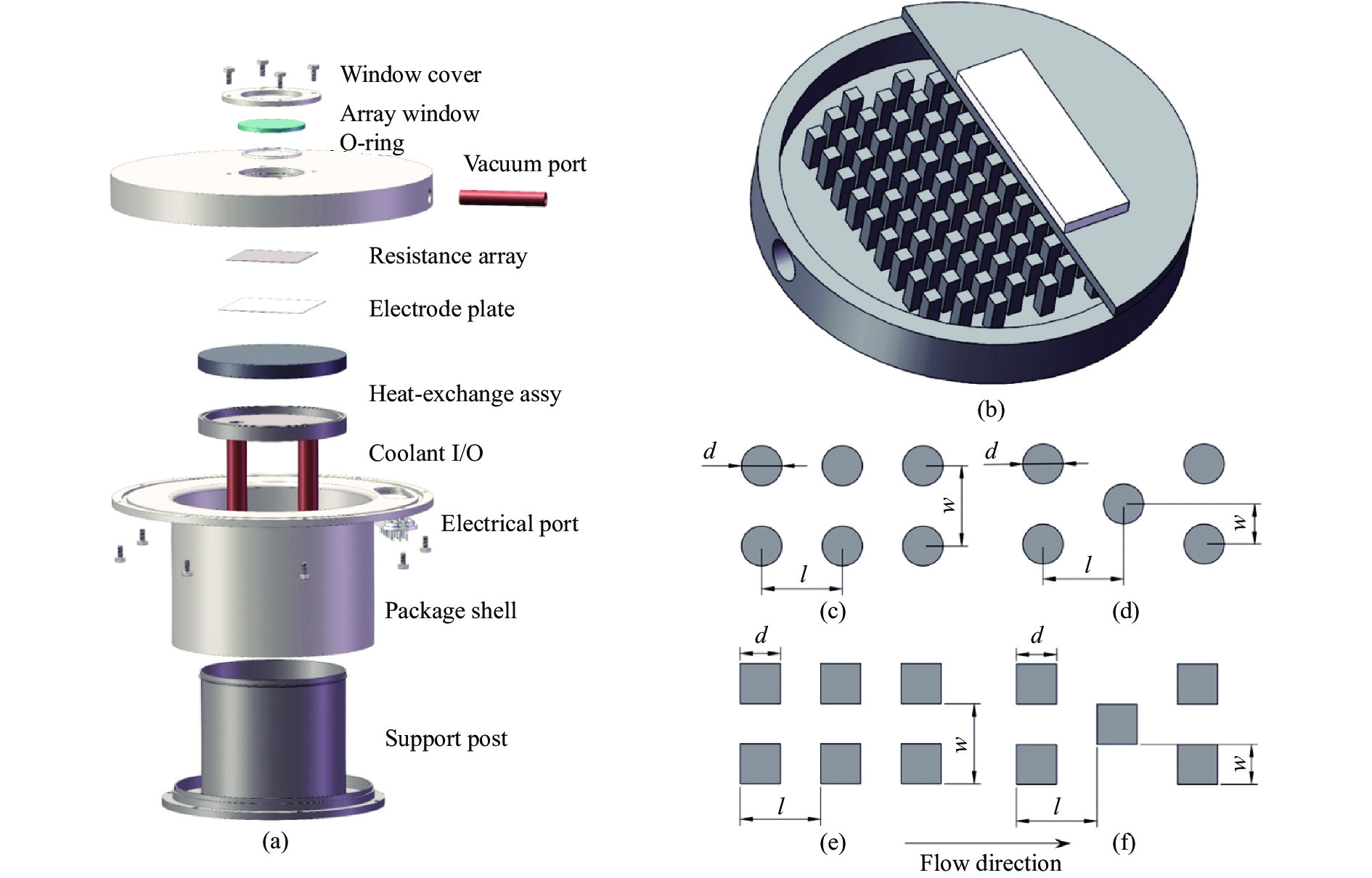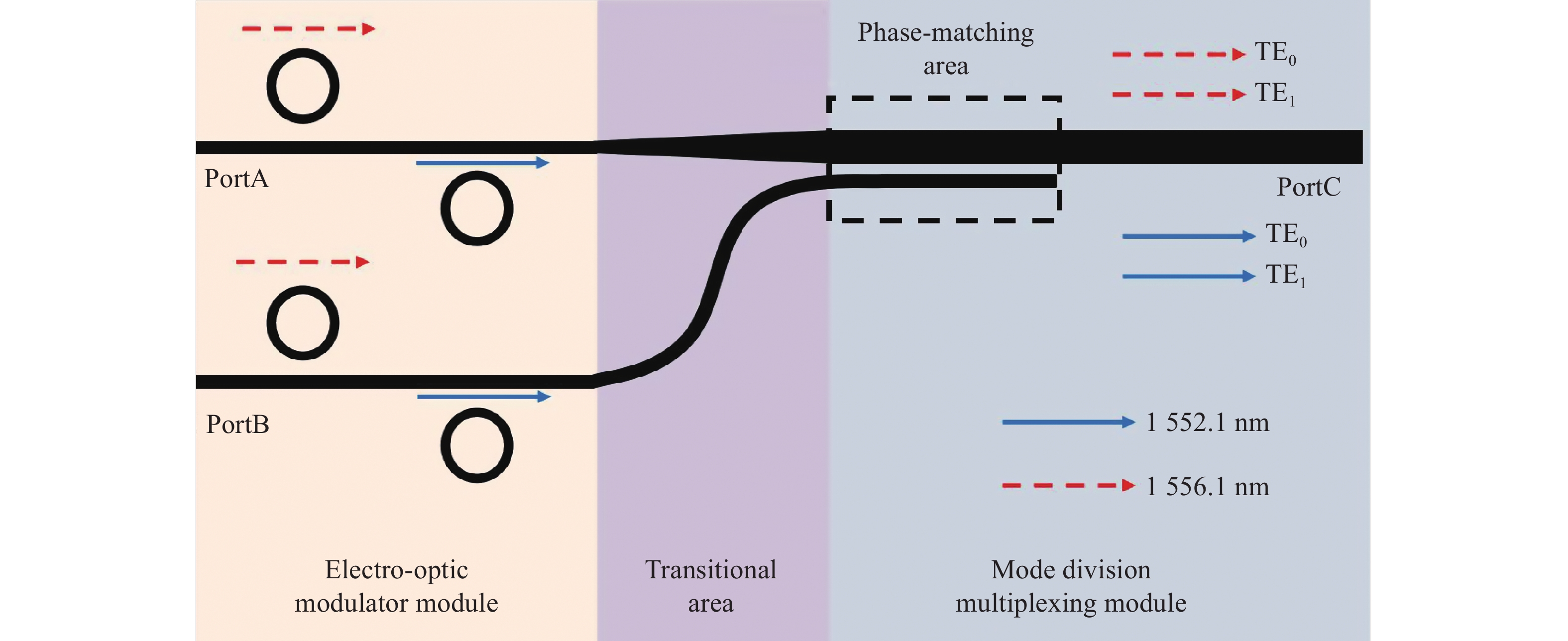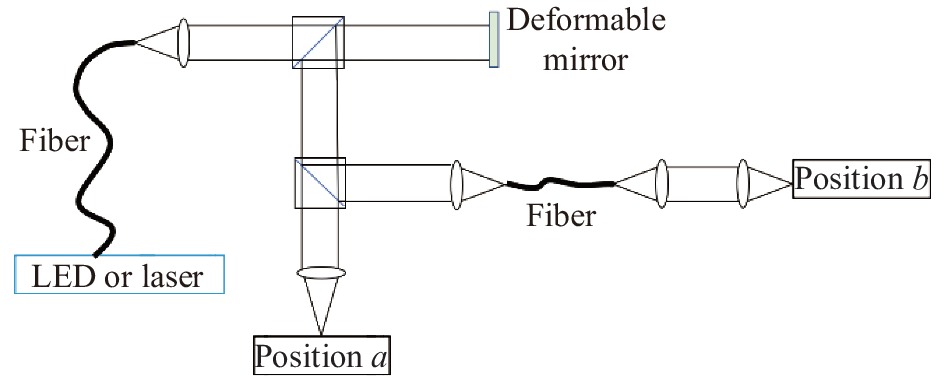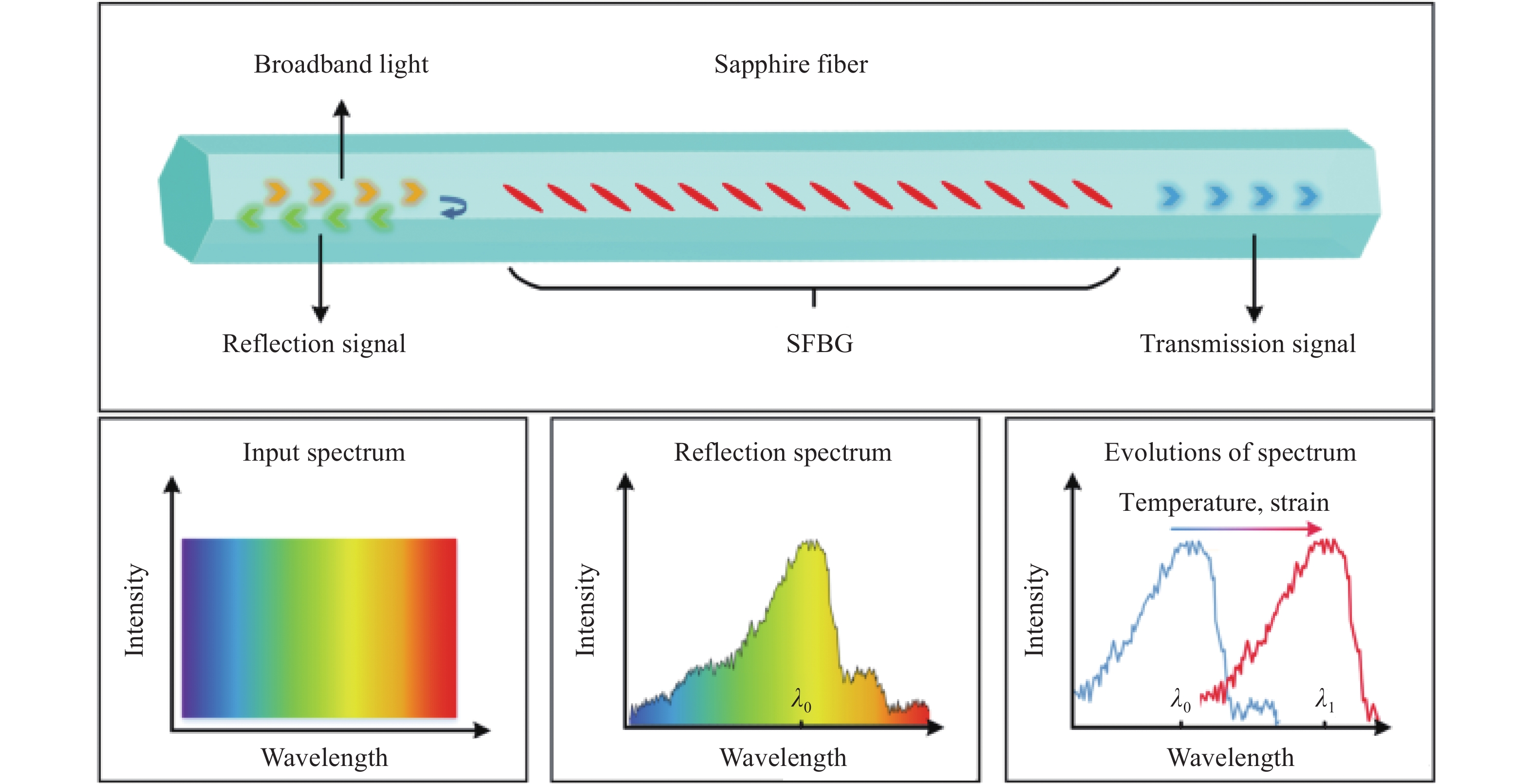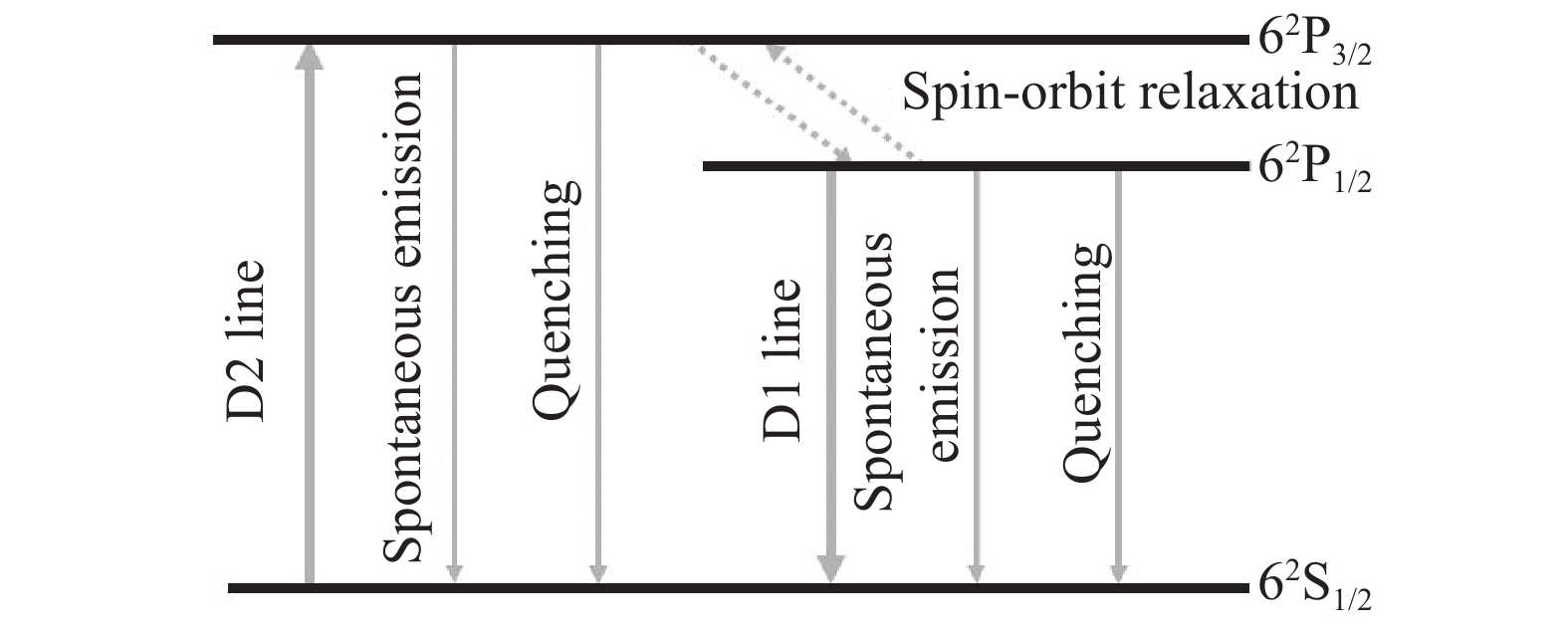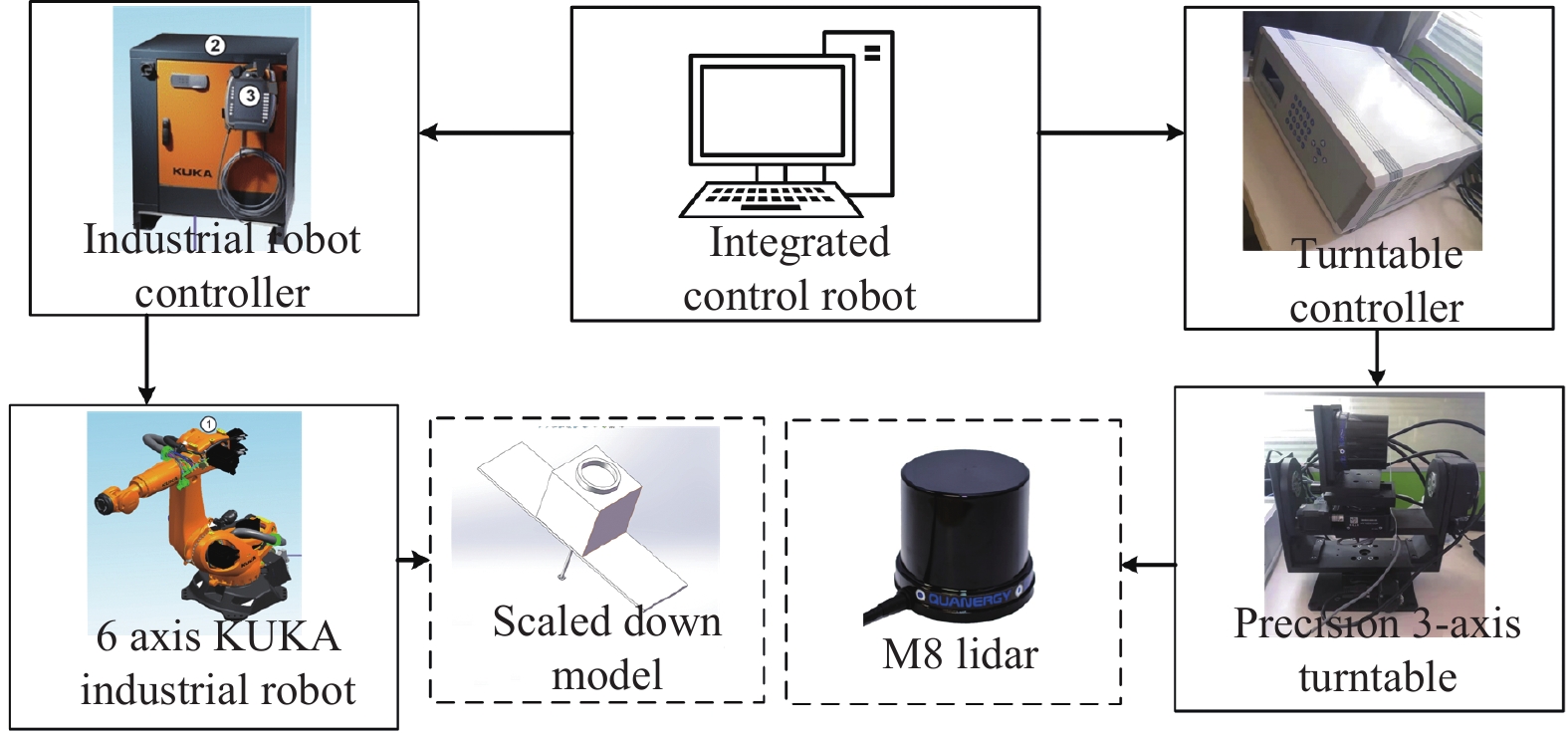2022 Vol. 51, No. 10
column
- Optical imaging
- Optical design
- Image processing
- Photoelectric measurement
- Infrared technology and application
- Optical fabrication
- Optical devices
- Optical communication and sensing
- Lasers & Laser optics
- Special issue-High-temperature sensing technology based on micro/nano optical structure
- Lasers & Laser optics
2022, 51(10): 20220094.
doi: 10.3788/IRLA20220094
The imaging quality of TDI push broom camera in maneuvering imaging mode is analyzed from the perspectives of resolution and radiance. Firstly, the Los tracking method is proposed to analyze and calculate the resolution of TDI and linear array directions. By constructing the coordinate conversion matrix between sidesway and satellite points, the unit vectors of TDI and linear array in different maneuver angles are obtained. Then, the projection vectors of the unit vectors in two directions on the ground are calculated along the Los direction, the ground pixel resolution is calculated, combined with the parameters of the camera, the orbital height and the earth radius. At the same time, the integration time of different fields of view are obtained according to the projection rate of the satellite on the ground, and the MTF degradation of edge fields of view under different TDI stages is analyzed with the reference integration time of central field of view. Taking a remote sensing model as an example, the specific analysis and calculation are carried out, and the requirements for the yaw angle are put forward according to the degradation of MTF. The calculated results show that the MTF of the edge spectrum section has decreased to 0 when the TDI series is 60 under the large side sway, so the TDI stage should be selected carefully in orbit. Then, combined with the theoretical calculation and on orbit image, the influence of the atmosphere on the image contrast under different side or yaw angles is analyzed. The analysis shows that the yaw will change the atmospheric transmission path, thus affecting the target contrast. The analysis results can provide a reference for the later image correction.
2022, 51(10): 20210989.
doi: 10.3788/IRLA20210989
3D imaging technology is widely used in autopilot, aviation mission and military field. Imaging systems with different technical regimes have different advantages. Among them, three-dimensional imaging technology based on multi-pixel photon counter (MPPC) has broad development potential because of its advantages of fast imaging speed and sensitivity to extremely weak light. However, due to the immature development of MPPC array, the detection level of weak light 3D imaging based on MPPC array is limited. In this paper, a three-dimensional imaging system is developed by using the 32×32 scale MPPC array S15013 series two-dimensional photon counting image sensor developed by Hamamatsu company of Japan. Each pixel of the sensor is composed of 12 single photon avalanche diodes in parallel, and its total detection pixels are more than 1 K. Based on the system, the effects of threshold voltage, lens aperture and other parameters on the three-dimensional imaging detection results are analyzed, the detection sensitivity and accuracy of the system are tested, and the three-dimensional imaging detection test is carried out for the simulated target 37 m away. The experimental results show that under the dark condition of echo photons of about 1.98 photons/pixel, the ranging accuracy of the target area reaches 0.268 m, and the three-dimensional structure characteristics are obvious, which is close to the detection level of single photon imaging.
2022, 51(10): 20210803.
doi: 10.3788/IRLA20210803
In modern medicine, nuclear scans, Positron Emission Tomography (PET), and Magnetic Resonance Imaging (MRI) technology have been widely used to provide tissue morphology and functional information. However, these technologies have their own shortcomings in resolution or imaging depth. A new optical detection technology based on the principle of low-coherence interference can achieve high-resolution and large-depth imaging at the same time. This technology is called optical coherence tomography (OCT) technology. OCT technology is a non-contact, non-invasive, non-damage imaging technology that combines high longitudinal resolution with high transverse resolution, and can achieve the same effect as biopsy observation. OCT uses a low-energy near-infrared light source as the detection light, combined with non-damaging methods such as microscope heads, hand-held probes or endoscopes, for routine detection, and will not cause damage to biological tissues. At the same time, OCT combined with rapidly developing image acquisition, analysis and processing technology can realize real-time three-dimensional imaging, and extract useful information for diagnosis for quantitative analysis, which provides convenience for doctors' diagnosis. This review focuses on the classic OCT imaging technology and its related medical application technologies, such as SD-OCT, SS-OCT, aOCT, PS-OCT and D-OCT, in the detection of diseases of the respiratory system, oral cavity, brain tissue, kidney and other major organs in the application.
2022, 51(10): 20220365.
doi: 10.3788/IRLA20220365
Systematically adopting strict control over the processing and assembly accuracy of optical elements, adopting high-quality and stable opto mechanical structure, and using precision thermal control are the conventional methods to ensure the high performance imaging quality of the optical system of space cameras in the past, but at the same time, the implementation of this strategy also brings high economic and resource costs to camera development. In the face of the development trend of low-cost high-performance space optical cameras, reducing the error sensitivity of the optical system and lowering the implementation cost while ensuring the imaging performance are the issues that need to be faced and solved. In this paper, a compact space camera as a background, and the low error-sensitivity design method (desensitization design method) is applied to a coaxial two-mirror catadioptric optical system with a focal length of 500 mm, a relative aperture of 1 : 5, and a field of view of 2.75°×2.75°. The results show that the optical system, based on the desensitized design method, not only gets excellent aberration correction theoretical results and modulation transfer function which is close to the diffraction limit, but also shows that the optical system is robust under the error interference in the simulation, which provides a guarantee for the rapid and low-cost manufacturing of the camera. The optical system desensitization design method has an important application value for the design and rapid development of high-performance small space loads at low cost.
2022, 51(10): 20211119.
doi: 10.3788/IRLA20211119
In order to overcome the shortcomings of the existing direct design method of freeform surface and the large amount of calculation, according to the structural characteristics of the off-axis display system, a three-dimensional direct design method of freeform surface based on Marius's law is proposed. First, according to Marius's law, all the characteristic data points of the freeform surface are solved in the full field of view and the full aperture. Then the characteristic data points are fitted into a freeform surface characterized by polynomials, and the initial structure of freeform off-axis system with good imaging quality is obtained directly. Finally, the polynomial coefficient is optimized with the merit function and the best fitting coefficient is determined. The required freeform surface mirror is generated and the final structure of the off-axis head-mounted display optical system is obtained. This method simplifies the design process and has high calculation efficiency. Based on the proposed method, a single-mirror head-mounted display optical system and a two-mirror head-mounted display optical system are designed with an entrance pupil diameter of 3 mm, a field angle of 19.12°×14.4° and an entrance pupil diameter of 8 mm, a field angle of 23°×16°, respectively. The design results show that single/two-mirror head-mounted display system designed by proposed method has good imaging quality and compact system structure. Tolerance analysis shows that the single/two head-mounted display system can finally achieve MTF greater than 0.3 lp/mm and 0.35 lp/mm in full field of view after introducing tolerances.
2022, 51(10): 20220303.
doi: 10.3788/IRLA20220303
China-Brazil Earth Resource Satellite is based on the field of land resources and mainly focuses on high and moderate resolution optical remote sensing. The main payload on the 04A satellite adopts off-axis TMA optical system with large field of view and low distortion. In order to solve the problem of harsh mechanical environment caused by vertical installation of the camera, a solution of box-type main structure and passive vibration isolation is proposed. We start with main frame design, mirror support and vibration isolation measures, the static and dynamic modeling of the off-axis TMA camera is carried out, and the structural form is optimized. Through the optical-mechanical integration analysis, the natural frequency of the structure is improved, the first-order frequency reaches 168 Hz, and the mechanical response of the transmitting section is reduced, the mechanical response of the key components of the camera is attenuated by more than 50%, and the transfer function of the camera system is greater than 0.18. The ground environment test and in-orbit test show that the optical mechanical structure design is reasonable, the mechanical and vibration isolation performance meet the use requirements.
2022, 51(10): 20211122.
doi: 10.3788/IRLA20211122
Aiming at the defocusing problem of aerial photoelectric remote sensors in different working environments, a moving lens group is used to adjust the focus to ensure its imaging quality. The focusing mechanism adopts the anti-backlash screw nut pair as the transmission mechanism, adopts 6 precision bearings and elastic preload components as guide mechanism and adopts a pair of eddy current sensors and a diamond-shaped detected part as the displacement sensor to ensure the focusing accuracy to the greatest extent under the limited envelope size. The precision analysis of the focusing mechanism was carried out. And a test platform was built to carry out the transmission positioning accuracy experiment and the shaking accuracy experiment. The experimental results show that the transmission positioning accuracy of the focusing mechanism is within ±6 μm, and the shaking accuracy is within ±4″, which meets the design requirements of focusing accuracy proposed by the optical system.
2022, 51(10): 20220042.
doi: 10.3788/IRLA20220042
In recent years, siamese tracking networks have achieved promising performance in visual tracking. However, there is still large room for improvement in the challenge of target state estimation and complex aberrances for siamese trackers. With the success of deep learning in object detection, more and more object detection technologies are used to guide object tracking. This survey reviews the siamese tracking algorithms integrating detection technologies. Firstly, we introduce the relation and difference between detection and tracking, and analyze the feasibility of improving siamese tracking algorithms by detection technologies. Then, we elaborate the existing siamese trackers based on different detection frameworks. Furthermore, we conduct extensive experiments to compare and analyze the representative methods on the popular OTB100, VOT2018, GOT-10k, and LaSOT benchmarks. Finally, we summarize our manuscript and prospect the further trends of visual tracking.
2022, 51(10): 20220013.
doi: 10.3788/IRLA20220013
In order to improve the robustness of the target tracking algorithm in complex scenes and optimize the operating efficiency of the model, a correlation filter tracking algorithm based on adaptive feature fusion was proposed. The algorithm adopts histogram of oriented gradient feature and deep feature extraction network feature to construct the target information, uses the peak to sidelobe ratio and the value of side lobe ratio of feature response to adaptively determine the fusion coefficient, and predicts the target position according to the fusion response. In order to reduce the influence of illumination variation, occlusion and target deformation on the tracking process and adapt to the change of scene, the average peak-to correlation energy was introduced to design the filter learning rate adjustment mechanism and update the model dynamically. Through the lightweight design of the deep feature extraction network, the parameters of the feature network were reduced and the tracking speed was improved. Experimental results show that the algorithm effectively reduces the influence of interference on the tracking results, and the algorithm has better performance in tracking precision, success rate and speed compared with other tracking algorithm on the public video dataset OTB100.
2022, 51(10): 20220078.
doi: 10.3788/IRLA20220078
InGaAs NIR detectors are widely used in aerospace, military and civilian fields. In order to realize the intelligence of InGaAs detectors, combined with face detection applications, an ultra-lightweight InGaAs NIR face detection algorithm that can be deployed in low-power mobile smart devices is proposed. This paper mainly studies the problems of few NIR face samples and low-power device deployment, and uses transfer learning and binary quantization to train the network. The algorithm first realizes a pre-trained face detection network based on SSD through a large-scale visible light face dataset. Then, the binary quantization scheme is used to greatly compress the network parameter space size and calculation amount, but the network accuracy is reduced at the same time. In order to further improve the effect of network binary quantization, this paper introduces feature mean information for the binary quantization process and makes up for the loss of accuracy in the form of adversarial convolution. Finally, the algorithm fine-tunes the pre-trained binary network through small-scale NIR face data to achieve the final network. The binarization face detection network implemented in this paper can achieve an average accuracy of 71.18% in the collected NIR face verification set.
2022, 51(10): 20220018.
doi: 10.3788/IRLA20220018
A deblurring method combining multi-scale feature fusion and a multi-input multi-output encoder-decoder is proposed for non-uniform blurred images caused by camera shake, fast motion of the captured object, and low shutter speed. Firstly, the initial features of smaller-scale blurred images are extracted using a multi-scale feature extraction module, which uses dilated convolution to obtain a larger receptive field with a smaller number of parameters. Second, the feature attention module is used to adaptively learn useful information from different scale features, which can effectively reduce redundant features by using features of small-scale images to generate attention maps. Finally, the multi-scale feature progressive fusion module is applied to gradually fuse features at different scales, making the information of different scale features to complement each other. Compared with recent multi-scale methods that use multiple subnets stacked on top of each other, we use a single network to extract multi-scale features, thus reducing the training difficulty. To evaluate the deblurring effect and generalization performance of the network, the proposed method is tested on both the benchmark datasets GoPro, HIDE, and the real dataset RealBlur. The peak signal-to-noise ratio values of 31.73 dB and 29.39 dB and the structural similarity values of 0.951 and 0.923 on the GoPro and HIDE datasets, respectively. The deblurring performance is higher than that of recent state-of-the-art deblurring methods, and it also has better performance on the RealBlur dataset containing real scenarios. The experimental results demonstrate that the proposed method is more effective than recent deblurring methods, can effectively restore the edge contour and texture detail information of images. In addition, our method can improve the robustness of subsequent high-level computer vision tasks.
2022, 51(10): 20220029.
doi: 10.3788/IRLA20220029
Synthetic aperture radar (SAR) automatic target recognition (ATR) is an important support technology for modern battlefield intelligence reconnaissance and precision strikes. In order to improve the overall performance of SAR ATR, a method based on multiset canonical correlations analysis (MCCA) of two-dimensional (2D) projection features is proposed. First, a series of 2D random projection matrices are used to extract features from SAR images to obtain multi-level feature descriptions. Considering the correlation between these results and the possible redundancy and interference, they are further fused through MCCA to obtain a single feature vector. The sparse representation-based classification (SRC) is used to process the fusion feature vector to determine the target class. The experiment is carried out based on the MSTAR dataset to fully test the proposed methods. The experimental results verify its effectiveness.
2022, 51(10): 20220064.
doi: 10.3788/IRLA20220064
It is an important technical means to accurately evaluate the performance of laser system by measuring the spatio-temporal distribution of laser power density emitted to the far field and obtaining the key index parameters such as total power on the target, beam quality, power in the bucket and power-time curve. A method for measuring the spatio-temporal distribution of near infrared pulse laser power density based on photodetector array is introduced. The detector array can be used to measure laser spot parameters in the wavelength range of 900 nm to 1700 nm with dynamic range more than 2000 times. The detector array has the characteristics of good unit consistency and high measurement accuracy, large measurement area, and can meets the needs of pulse and continuous laser parameter measurement. The experimental results for performance of the detector array indicate that the deviation between the measured value and the laser output power is less than 5%, and the measurement results of laser spot distribution are accurate and reliable. The detector array has been successfully applied in the parameter test of several laser system, can be used as an effective technical scheme for the measurement of pulse and continuous laser spot parameters in response band.
2022, 51(10): 20211121.
doi: 10.3788/IRLA20211121
A novel method of cylindrical curved crystal inspection is presented utilized the X-ray tube as the light source and the CMOS detector coated scintillator fibre faceplate as the on-line recorder. According to the design of the high accuracy coaxial turntable, the whole cylindrical curved crystal surface is converted into several line segments to be detected separately, and the arrangement of optical paths and the position shift of spectral lines are calculated analytically. The iron target X-ray tube (the wavelength of Kβ feature spectral line is 0.193 6 nm) is selected as the experimental light source. The iron material X-ray tube is chosen as the X-ray source. The sample is quartz cylindrical curved crystal with the 120 mm radius of curvature. The feature spectral lines of Fe-Kα and Fe-Kβ are observed clearly. The Fe-Kα spectral line is shifted 96 μm through analyzing image of 9 sample locations on the cylindrical curved crystal. The deviation of the radius is 40 μm and ΔR/R is 0.033%. It shows that the sample was curved in high accuracy. The tested cylindrical curved crystal has been applied on the experiments carried on the large laser facility and the high performance spectral data is acquired. It demonstrates that the method of curved crystal inspection is available and useful.
2022, 51(10): 20220030.
doi: 10.3788/IRLA20220030
Pose estimation in monocular vision is a key problem in three-dimensional measurement, which is widely used in machine vision, precision measurement and so on. This problem can be solved by n-point perspective (PnP) algorithm. Orthogonal iterative algorithm (OI), as the representative of PnP algorithm, has been widely used in practice because of its high precision. In order to further improve the robustness and computational efficiency of OI algorithm, a weighted accelerated orthogonal iterative algorithm (WAOI) is proposed in this paper. Firstly, the weighted orthogonal iterative algorithm is deduced according to the classical orthogonal iterative algorithm. The weighted collinearity error function is constructed and the weight is updated by using the object point reprojection error to achieve the purpose of iteratively optimizing the pose estimation results. Secondly on this basis, through adaptive weights, the calculation of translation vector and objective function in each iteration is integrated to reduce the amount of calculation in the iterative process, so as to accelerate the algorithm. The experimental results show that when there are two rough points in the 12 reference points, the reprojection accuracy of the reference point of WAOI is 0.64 pixel, the operation time is 8.02 ms, the accuracy is high and the running speed is fast, so it has strong engineering practical value.
2022, 51(10): 20220019.
doi: 10.3788/IRLA20220019
Spectral reflectance of targeted object is considered a vital inherent physical property in underwater spectral detection. However, the underwater environment poses significant challenges in spectral detection through strong absorption and scattering effects of light. To explore the influence of water turbidity on the accuracy of spectral detection, this paper describes the spectral reflectance detection under varying turbidity. Underwater spectral imaging system based on liquid crystal tunable filter (LCTF) is used for experimentation. Results proved that the increase in turbidity will further enhance the scattering intensity of water body. Based on the nonlinear increase in the pixel response of black and white board, the rapid upsurge in scattering intensity between 400–500 nm is noticed. Simultaneously, the spectral reconstruction method is applied, which yielded in maximum absolute error of 5.3% for spectral reflectance under different turbidity conditions.
2022, 51(10): 20220023.
doi: 10.3788/IRLA20220023
The radiation effect of reaction control system’s hot gas jet has an important role in optical detecting and tracking operations. Based on spectral band radiation model, and by solving three-dimensional Navier-Stokes equations with chemical reaction source term and radiation transport equation, numerical simulation of hypersonic vehicle’s RCS hot jet interaction flow field and its infrared radiation characteristics is performed, the influence of afterburning effect, flight condition and observation angles on radiation characteristics is studied. The result shows: Computational results compare well with experiment results in typical condition, which indicates the flow field and radiation computation method has good adaptability; Infrared radiation in flow field is mainly contributed by CO2 and H2O, where CO2 contributes more, afterburning effect has significant influence on flow field radiant intensity, it can increase the flow field radiant intensity more than double at an altitude of 20 km; Flow field radiant intensity first decreases and then increases as flight velocity/altitude increases, as flight altitude increases, the influence of afterburning effect on radiant intensity sharply diminishes; The radiance enhancement caused by vehicle’s RCS plume is apparent, the radiant intensity at top view and 3-5 μm band is the strongest. These results can provide reference for further application in aircraft detecting and tracking.
2022, 51(10): 20220085.
doi: 10.3788/IRLA20220085
High-power devices for low-temperature applications require a liquid-cooled chamber structure with high cooling efficiency. The Computational Fluid Dynamics (CFD) method was used to simulate the flow and heat transfer process of the cavity structure, the microchannel structure, and the pin-fins structure under the condition of the liquid nitrogen-nitrogen two-phase flow as the refrigerant. The results show that the pin-fins structure has the best heat exchange effect among the three above structures. The circular pin-fins structure is easy to develop a branch in the direction of 45°, and the square pin-fins structure is conducive to the uniform flow velocity in the vertical direction. Compared with the parallel pin-fins structure, the flow velocity distribution in the circular and square pin-fins is more uniform when the pin-fins are staggered. Comparing the convective heat transfer coefficients in different liquid cooling chambers with pin-fin structures, under the same other parameters, the staggered arrangement is better than the parallel arrangement, and the square pin-fin is better than the circular pin-fin. The structure with the best heat transfer effect is the staggered 2 mm square pin-fin structure, and the convective heat transfer coefficient is 4223 W/(m2·K), which is 125.83% higher than cavity structure. The above structure is manufactured for physical verification. The temperature of the cold head under the 107.6 W heating power corresponds well with the simulation result under the same condition.
2022, 51(10): 20220033.
doi: 10.3788/IRLA20220033
The modeling of infrared radiation characteristics of ground targets requires relatively complete parameters. For non-cooperative targets, many related parameters are difficult or cannot be directly obtained by testing methods. The lack of parameters brings great difficulties to the prediction of target infrared radiation characteristics. The infrared test data of the target can be considered as the result of the comprehensive action of information including all parameters and the environment. Therefore, the test data of the target can be used to invert some important missing parameters. For cold static target, the possible missing parameters of ground target modeling are analyzed firstly, and the value ranges of the missing parameters are estimated through research and expert knowledge, etc. Based on the sensitivity theory and orthogonal experiment method, the influences of the missing parameters on target characteristics are studied, and the main missing parameters are determined, including material thickness, solar absorptivity and emissivity of the material surface. Then, based on the ground target simulation test data or measured data, combined with the conjugate gradient method, a method for inversion and model verification of ground target infrared modeling missing parameters is proposed. Finally, two examples are used to verify the method. The results show that the calculated temperature of typical measuring points after inversion of missing parameters using this method is highly consistent with the actual temperature variation characteristics, and the data error of temperature at different times does not exceed 2 K at most. The research shows that the method has good accuracy, and it can be extended and applied to the inversion of missing parameters in the infrared modeling of non-cooperative targets and the prediction of infrared radiation characteristics in the future.
2022, 51(10): 20220048.
doi: 10.3788/IRLA20220048
In the target detection and identification system, the signal-to-noise ratio between target and background can be improved by using multi-channel filter, so as to achieve accurate detection of target signal. The fabrication technology of multi-channel filter based on nano-imprinting has high requirements for the surface precision and structure precision of the spacer-layer mold. According to the manufacturing requirements of the spacer-layer mold of multi-channel filter array, based on the Single Point Diamond Turning (SPDT), the high-precision manufacturing of the spacer-layer mold is realized by using Fast Tool Servo (FTS). The surface morphology of the mold was detected by using White Light Interference (WLI). The analysis shows that the processing results of the multi-channel filter with 5×5 array structure are in good agreement with the design value, and the accuracy of horizontal dimension and vertical dimension are both better than 5%, which fully meet the design requirements. This technology provides technical support for the large-scale and mass manufacturing of multi-channel filters, and it also provides an effective means for the fabrication of aperiodic array optical elements.
2022, 51(10): 20220053.
doi: 10.3788/IRLA20220053
PbS colloidal quantum dots are widely used in the field of photodetectors due to the excellent characteristics including adjustable band gap, solution processable and high absorption coefficient, etc. However, PbS quantum dot photodetectors based on photodiode structure tend to use different materials for the processing of the N-type layer, and thus leading to a much more complexed device design method and fabrication process, which hinders the application of such photodetectors in planar array imaging chips in the future. To simplify the fabrication process, a PbS quantum dot P-N homojunction photodetector is proposed here, in which the P-type and N-type layer are prepared by only one process. Results show that the PbS quantum dot photodetector has a good linear response to different incident intensity. The responsivity of the device is about 0.11 A/W and the specific detectivity is approximately 3.41 × 1011 Jones at 700 nm under the reverse bias voltage of 0.5 V, which indicate the excellent performance of the detector in weak illumination conditions. It can be concluded that the PbS quantum dot P-N homojunction photodetector proposed here can promote its development in the field of planar array imaging and is great helpful to the development of planar array imaging chip techniques based on colloidal quantum dots.
2022, 51(10): 20211107.
doi: 10.3788/IRLA20211107
In order to realize the miniaturization and multi-function of optoelectronic devices and further improve the capacity and speed of information transmission, an on-chip integrated device based on photonic crystal for dual-wavelength electro-optic modulation and mode division multiplexing (MDM) is proposed. The electro-optical modulation module of the integrated device is composed of a silicon-based photonic crystal waveguide and two L3 composite resonators, and the MDM module consists of silicon-based asymmetric parallel nanowire waveguides. A silicon-based photonic crystal waveguide is used at the junction of the two modules. The L3 composite resonators and PN doping structure are used to achieve the modulation of the two-wavelength TE0 mode, and the asymmetric directional coupling structure is used to convert the TE0 mode of two wavelengths into the TE1 mode. The parameters of the integrated device are calculated using three-dimensional finite-difference time-domain (3D-FDTD) method. The results show that when the voltage is 1.05 V, the integrated device can achieve a center wavelength of 1 552.1 nm and 1 556.1 nm TE0 mode, TE1 mode on-off modulation and two-mode mode division multiplexing function. The extinction ratio of the device is as high as 24.67 dB, and the modulation depths are both 0.99. The insertion loss and the channel crosstalk are less than 0.57 dB and −34.68 dB, respectively. And the minimum modulation speed is 17.54 GHz. The integrated device has compact structure and is expected to be applied to high-speed and large-capacity optical communication systems.
2022, 51(10): 20210763.
doi: 10.3788/IRLA20210763
The modal noise in optical fiber limits the measurement accuracy of the next generation of high precision radial velocity spectrograph. Especially when using coherent light sources for wavelength calibration, modal noise can induce radial velocity errors that reduce the accuracy of radial velocity measurement. In order to suppress optical fiber modal noise, a technical method based on deformable mirror to dynamically change speckle pattern is proposed. The method smoothes the speckle pattern caused by optical fiber and improves the centroid stability of calibration spectrum by dynamically changing the shape of deformable mirror in one single exposure time, so as to ensure the measurement accuracy of radial velocity. A 632.8 nm He-Ne laser is used as a coherent calibration light source to verify the effectiveness of the device. Experimental results show that the optical fiber modal noise can be effectively suppressed when a single exposure image contains about 105 speckle patterns. For the spectrograph with resolution R=100000, the radial velocity calibration error caused by optical fiber modal noise is about 19.8 cm/s in use of one single calibration line, which is similar to the effect of other suppression methods in the world. And this method can not only improve the energy utilization rate but also not affect the service life of optical fiber.
2022, 51(10): 20210938.
doi: 10.3788/IRLA20210938
In order to improve the data processing capabilities of network edge and meet the requirements of large bandwidth and low latency of the terminal, a cloud computing platform based on edge infrastructure is built, and an optical fiber network model is designed with dynamic bandwidth adjustment. A timing optimization algorithm based on edge cloud computing is proposed and applied to optical fiber wireless networks. The average transmission delay of the timing optimization algorithm is simulated and analyzed through OPNET software, and the results show that the maximum delay after optimization is 43.1 ms, which is only 34.2% of the traditional method. The experiment analyzes the data communication between multiple terminals in the local area network. The transmission efficiency, optical fiber channel utilization and transmission energy consumption of the three algorithms have been discussed. The experimental results show that the test results using the timing optimization algorithm have been significantly improved. Its transmission efficiency has increased by nearly double, the channel utilization rate of edge cloud data average transmission delay has increased by about 6.2%, and the network transmission energy consumption has the best value. The optical fiber wireless network model and its optimization algorithm have significant improvements in transmission delay, channel utilization, and network energy consumption. It has certain advantages in improving the selection of optical fiber communication links and data interaction at the edge.
2022, 51(10): 20210695.
doi: 10.3788/IRLA20210695
The intelligent assembly technology of the industrial production line was a key means to improve the work efficiency of the production line and ensure the uniformity of the products. Increasingly complex industrial product structures have higher requirements for intelligent assembly control accuracy. Among them, feedback correction technology based on real-time online measurement has become a research hotspot. In order to realize the flexible measurement of the intelligent assembly process of industrial production lines, a feedback assembly control method based on optical fiber sensing was proposed. The system uses multiple FBG sensors to obtain the real-time strain of the assembly structure, and the temperature strain decoupling was completed by different packaged FBG sensors. Finally, the conversion of the degree of position deviation was completed by the way of neural network learning, and real-time correction of the assembly position was realized. Matlab was used to simulate the screw structure assembly process, and the stress distribution of screws with different lengths and force levels was simulated. The results show that the longer the screw length, the greater the strain under the same force. And the main strain of the screw is concentrated on the edge of the screw hole. In the experiment, the cantilever beam strain calibration experiment is used to obtain the fitting curves of different package states, the temperature calibration experiment is used to eliminate the temperature drift effect in the strain test data, and the position shift experiment is used to obtain the correction parameters. The results show that for a screw with a length of 15.0 mm, the average resolution of the system is about 0.012 3 mm/N, and for a screw with a length of 20.0 mm, the average resolution of the system is about 0.022 1 mm/N, and it has good linearity.
2022, 51(10): 20220068.
doi: 10.3788/IRLA20220068
In order to solve the problem that the position test is easily interfered in the sensitive environment, an anti-theft system based on reflective optical fiber sensing is proposed. The system uses a T-type optical fiber probe as a passive sensing probe, and the reflective accessories are installed on the surface of the security enclosure to provide security early warning through real-time testing of position offsets. The detection module fixes the optical fiber probe and the reflection accessories in the security position by pre-testing the optimal reflection position. On the basis of acquiring the laser echo signal, the field intensity distribution function with respect to the position is calculated. In the calibration experiment, the test position was increased from 0 to 5.0 mm, the maximum response optical power was 18.76 μW, and the maximum variance was 0.124. When the curve exceeded 3.0 mm, the monotonicity of the curve was good, which meets the system design requirements. In the comparison experiments of different interference types, the influences of humidity, temperature and vibration on the system test results were compared. The experimental results show that whether the optical power fluctuation of the interference term is linear or non-linear, the fluctuation range is less than <4 μW, and the fluctuation degree is greater than 18 μW under the real artificial opening condition. At the same time, the displacement offset calculated by the system inversion is also changed significantly, which is more than 8 times larger than the average displacement deviation of the interference term. The system has the advantages of passive sensing end, high sensitivity and good real-time performance, and can be effectively applied to security monitoring in sensitive environments.
2022, 51(10): 20220700.
doi: 10.3788/IRLA20220700
In-situ measurement of ultra-high temperature above 1800 ℃ is critical in many key fields of national defense security and national economy, such as hypersonic vehicles, aero engines, and nuclear reactors. Conventional silica-based fiber sensors can not withstand a high temperature of 1000 ℃, which is limited by the material characteristics of silica. A single-crystal sapphire fiber is a promising candidate for high temperature sensing owing to its ultra-high melting temperature of ~2053 ℃ and low transmission loss. Sapphire fiber Bragg grating (SFBG) sensors, which have the advantages of outstanding temperature resistance, high measurement accuracy, and capability for multi-point measurement, are the most promising high temperature sensors and can be obtained by inscribing the grating in the single-crystal sapphire fiber. In this paper, we present the working principles and theoretical model of high temperature SFBG sensors. Then, three mainstream fabrication technologies, including femtosecond laser phase mask technology, femtosecond laser Talbot interferometry, and femtosecond laser direct writing technology, are introduced. Moreover, the advantages and disadvantages of these methods are discussed in preparation efficiency and spectral properties. It is concluded that the femtosecond laser direct writing technology is the best method for fabricating high temperature SFBG sensors. Moreover, the optimization methods of the reflection spectrum of SFBGs are summarized, including how to reduce 3 dB bandwidth and spectral noise. The temperature sensing characteristics, packaging process, and high temperature and strain sensing applications of SFBGs are further introduced. Finally, the future development trend of SFBG sensors is discussed. The rapid development and large-scale application of high temperature SFBG sensors will be helpful to solve the problem of containment in structural health monitoring of major equipment in aviation, nuclear power, and other fields.
2022, 51(10): 20220685.
doi: 10.3788/IRLA20220685
A stagnation cover type total temperature and pressure fiber-optic composite probe is designed for the demand of total temperature and pressure measurement at the engine inlet. Firstly, the aerodynamic simulation of the probe structure was carried out by using the finite element method, and the influence of the probe structure parameters on the measurement results was analyzed. On this basis, the total temperature and pressure fiber-optic composite probe was fabricated and its working performance was tested by building a static test system. The experimental results show that the total temperature and pressure fiber-optic composite probe can work under the temperature and pressure composite environment of 150 ℃ and 0.25 MPa. The maximum nonlinearity of the total pressure sensor is 0.5% in the range of room temperature - 150 °C, and the maximum nonlinearity of the total temperature sensor is 4.04% in the ambient pressure environment. Finally, the temperature decoupling of the pressure parameters was completed, and the pressure measurement error in the full temperature range did not exceed 1.55%. The designed total temperature and pressure fiber optic composite probe diameter is 5 mm, which effectively reduces the interference of the probe to the flow field.
2022, 51(10): 20220549.
doi: 10.3788/IRLA20220549
In this paper, the high temperature sensing properties of single-mode fiber, photonic crystal fiber, and gold-coated fiber at 1100 ℃, 1200 ℃, and 1000 ℃ were studied based on Brillouin optical time-domain analysis (BOTDA). The fact of Brillouin frequency shift (BFS) hopping and the coating burning indicated that the silica fiber should be annealed to reach a thermally stable state. After annealing, the BFS of the three kinds of fibers increased with temperature nonlinearly. The coating of single-mode fiber and photonic crystal fiber burned at high temperatures. And the crystallization of silicon doped its mechanical strength, indicating that it can only be used as a one-time high-temperature sensor. The gold-coated fiber with a higher melting point and better hermeticity can maintain good mechanical strength after high-temperature annealing, so it is a reusable high-temperature sensor. The research in this paper showed the potential for high-temperature sensing applications such as temperature monitoring of turbine engines.
2022, 51(10): 20220352.
doi: 10.3788/IRLA20220352
In order to meet the demands of diagnosing the characteristics of spatiotemporal evolution of temperature parameters in combustion field, a dynamic three-dimensional radiation thermometry method based on multi-CCD synchronous coupling was proposed. On the basis of multiline-of-sight measurements corresponding to different directions, the segmentation of the combustion field in the form of voxel was conducted by the algebraic reconstruction technique. According to Plank’s radiation law, the standard blackbody radiation source was used to calibrate the mapping relationship of optical and electrical signals, and the three-dimensional temperature field was characterized utilizing colorimetric thermometry. The radiation information of the combustion field in different line-of-sight directions was further obtained synchronously by controlling multi-CCD on the time series. On the basis of the grayscale information in R and G channels, the temperature parameter in the transient combustion field of the candle flame in the laboratory and the exhaust plume of a certain solid rocket motor device were tested. The results showed that the temperature distribution range of the candle flame in the laboratory was from 805.4 K to 1280.8 K. Through the spatiotemporal point verification using a thermocouple, the average error was 3.8%, and the maximum error was 4.36%. The maximum temperature of solid rocket motor device exhaust plume was 2125.7 K, the measurement error of which was within 8% by the verification of near infrared thermometer. The characteristic diagnosis of the three-dimensional temperature parameter in the combustion field could be realized with sufficient temporal and spatial resolution, which provides an effective method for the measurement of temperature parameter of solid rocket motors in the field of aerospace testing.
2022, 51(10): 20220491.
doi: 10.3788/IRLA20220491
Femtosecond laser direct writing of glass waveguides is an important means to rapidly prepare three-dimensional integrated photonic chips, and the accurate measurement of the effective refractive index of waveguides is significant for designing photonic devices. A breaking-arm Mach-Zendel interferometer (MZI) structure is designed and fabricated for in-situ precise measurement of the effective refractive index of glass waveguides. The different effective refractive index of the laser in the breaking region and within the waveguide produces a certain phase difference at the same length of transmission, which eventually leads to different interference results. The phase interference results of the MZI of the breaking arm are processed to obtain the effective refractive index of the laser direct-written glass waveguide as 1.504+7.7×10−4. The device is simulated by using the beam propagation algorithm of RSOFT, and the simulation results are in good agreement with the experimental results. This accurate measurement of the effective refractive index of the glass waveguide is of great significance for the enhancement of photonic chip design and fabrication.
2022, 51(10): 20220535.
doi: 10.3788/IRLA20220535
A temperature sensor based on polymer microsphere cavity is proposed, which measures the change of external temperature through the resonant wavelength shift and demonstrates the characteristics of high compactness and sensitivity. The finite-difference time-domain method is firstly employed to simulate the structure of tapered fiber coupled polymethyl methacrylate (PMMA) microspheres to verify its feasibility of whispering gallery mode excitation. Experimental results show that whispering gallery mode with a quality-factor on the order of 104 can be excited by evanescently coupling a polymer microsphere with a diameter of tens of micrometers through a tapered fiber with a diameter of 1.8 μm. Packaging the device by combining spot and complete coating can keep a stable coupling state between the tapered fiber and the microsphere and protect them from external contaminant. Red shift happens in the resonant spectrum of the microsphere cavity as the external temperature decreases since its negative thermo-optic coefficient is larger than the thermal expansion coefficient. When the external temperature varies in the range of 20-30 ℃, the polymer microsphere demonstrates a sensitivity of 68 pm/℃. In comparison with the conventional optical fiber sensors, lower detection limit can be achieved by the proposed temperature sensor with a higher quality-factor, which can be potentially used in the in-situ temperature precise measurement in a limited space.
2022, 51(10): 20220003.
doi: 10.3788/IRLA20220003
As a shallow water bathymetry technology, the space-borne laser measurement system can cover some remote waters that are difficult to reach by airborne/shipborne systems. It has unique advantages such as high measurement accuracy, working day-and-night ect. Taking a few sparse active space-borne laser measurements as the water depth calibration points, integrating passive space-borne remote sensing images, active and passive fusion is the current frontiers and hotspots in the field of bathymetry. We first introduces the working range, physical parameters and data products of space-borne photon-counting lidar, followed by the summarization of the measurement principle and theoretical transmission models, as well as the comparison of the advantages and disadvantages of different point cloud data denoising algorithms. At last, this paper concludes the application of space-borne fusion bathymetry inversion technology in different environ-ments, combs the process of technology development, summarizes the current problems, and looks forward to the future prospect and development direction of the technology.
2022, 51(10): 20211105.
doi: 10.3788/IRLA20211105
To study the effect of buffer gas on the three-dimensional gas temperature distribution and output performance of flowing-gas circulation diode-pumped alkali vapor laser (DPAL), the beam propagation equation is introduced into the theoretical model of flowing-gas circulation DPAL in this paper. The effects of the composition and pressure of the buffer gas on the output performance of the end-pumped transverse flow cesium vapor laser are simulated and analyzed. The three-dimensional distribution of work temperature and output power are obtained. The results show that when using pure alkanes as buffer gas, the temperature in the vapor cell corresponding to ethane is lower than methane with same pressure, and the laser output power is higher. When the mixture of alkane gas and inert gas is used as a buffer gas, if the pressure of alkane is low, adding an appropriate amount of He or Ar can reduce the temperature in the vapor cell and increase the laser output power.
2022, 51(10): 20220069.
doi: 10.3788/IRLA20220069
A widely tunable mid-infrared optical parametric oscillator (OPO) with high peak power, nanosecond pulses output, which was based on MgO-doped periodically poled LiNbO3 (MgO: PPLN) was reported in this paper. The MgO: PPLN OPO with a domain period of 29 μm was pumped by a fundamental laser of 1064 nm with high beam quality, and the fundamental laser operated at the repetition rates from 30 kHz to 50 kHz with the pulses duration less than 4 ns. The 48.45 kW peak power, 1.19 ns, and 30 kHz pulses at 3.93 μm were obtained, as the temperature of MgO: PPLN was at 80 ℃. The tunable range of mid-infrared wavelength was from 3.77 μm to 3.96 μm, as the temperature of MgO: PPLN was from 50 ℃ to 200 ℃. According to the experimental results, the characteristics of conversion efficiency and temperature tuning characteristics under different repetition rates were analyzed and discussed.
2022, 51(10): 20220002.
doi: 10.3788/IRLA20220002
A high-energy and high-frequency laser with 1 064 nm and 532 nm laser pulses is designed to diagnose the plasma electron temperature and density in the core and boundary regions of EAST Thomson scattering diagnostic system, respectively. We use electro-optic Q-switching, Cassegrain unstable cavity and xenon lamp pumped pulse amplifier to output a frequency of 100 Hz and an energy of 3.5 J@1064 nm laser pulse. The fundamental frequency optical energy is amplified by two-stage semiconductor side pump module to output laser energy of 5.5 J@1064 nm. Through theoretical calculation and analysis, the amplification capacity of the pump module is determined and compared with the experimental results. LBO crystal is used to double the fundamental frequency light, and the output energy is 3 J@532 nm pulse laser, the frequency doubling efficiency is 55%. The diameter of the output fundamental frequency light spot is about 14.51 mm, the pulse width is 11.90 ns, the diameter of the frequency doubling light spot is about 17.81 mm, the pulse width is 9.92 ns, and the laser pulse is Gaussian flat top distribution. The repetition rate is adjustable from 1 Hz to 100 Hz, and the spatial resolution of Thomson scattering diagnostic is up to 10 ms, which provides conditions for the study of microphysical problems such as core and boundary transport barrier.
2022, 51(10): 20220565.
doi: 10.3788/IRLA20220565
The traditional lidar usually uses Doppler effect to obtain the radial velocity of the target, but it is difficult to achieve this function when the echo signal is as low as single photon level. In this paper, we explore a method of velocity measurement using time-correlated single photon counting (TCSPC) technology. We have built a high repetition rate and high precision TCSPC velocity measurement system and carried out experimental research. The results show that the velocity measurement error is directly related to the photon count for single ranging under a certain velocity measurement duration, and the velocity measurement error is optimal when the photon count for single ranging is 1000-5000 under the experimental conditions in this paper. This method is expected to replace the Doppler velocity measurement method in the future and realize the velocity measurement of long-distance and high-speed moving targets.
2022, 51(10): 20220036.
doi: 10.3788/IRLA20220036
GaN HEMT is used as the switch of the discharge circuit to achieve nanosecond pulse width. Due to the low total gate charge of GaN HMET, a GaN HEMT with small size is used to build the input stage of the driver circuit to respond to the control signal and control the discharge circuit switch. The circuit is built to drive the 860 nm laser and tested. The power supply voltage of the discharge circuit is 12 V, and the test results show that the maximum output pulse width of 8.8 ns corresponds to a peak power greater than 8 W, and the minimum output pulse width is 4 ns. Another circuit is designed and tested to achieve a larger pulse width adjustable range. The circuit realizes adjustable pulse width greater than 8.4 ns of output light. When the power supply voltage is 20 V and the pulse width of the input signal is 100 ns, the output optical peak power can reach 44 W. The area of the circuit is 10 mm×6 mm and 13 mm×11 mm. In order to realize further miniaturization of the drive circuit, a integration method is proposed for the two designed circuits. The proposed circuit is simple in structure, easy to realize integration and low in cost, which provides a new idea for the design of narrow pulse laser drive circuit.
2022, 51(10): 20211115.
doi: 10.3788/IRLA20211115
In the process of acquiring point cloud data from non-cooperative target linear array lidar imaging, in-orbit verification test costs are high, the space environment is complex, and control is difficult. Based on the numerical simulation of 3D reconstruction of non-cooperative targets, a semi-physical simulation ground verification system is developed to simulate the acquisition process of spacecraft orbiting spacecraft. The KUKA six-axis robotic arm is equipped with a scaled-down satellite model to restore the motion state of the non-cooperative target, and the three-axis precision turntable is equipped with a linear scanning lidar to realize the data collection of the measurable parts of the non-cooperative target. The target scanning and data processing are completed through the integrated control system. This semi-physical ground verification system is used to carry out multi-view data acquisition experiments of non-cooperative targets with a scale ratio of 1∶10, conduct evaluation experiments by establishing resolution accuracy evaluation, fit evaluation, and error analysis criteria of actual motion and control motion. The experimental results show that the experimental system can effectively obtain the point cloud data of non-cooperative targets in the multi-view state, and the error between the target nutation motion angle calculated based on the point cloud data measurement and the target's true motion angle is within 4%. It can provide real technical data reference for future space on-orbit manipulation and 3D recon-struction technology.
2022, 51(10): 20211120.
doi: 10.3788/IRLA20211120
Slanted-edge imaging quality analysis method is one of the most commonly used methods in the evaluation of modulation transfer function(MTF). This imaging process method has broad application prospect because of its high beam transmission energy and strong practicability. The application of slanted-edge imaging quality analysis method to the camera imaging quality evaluation system under laser irradiation is credible and effective. However, the factors such as edge inclination angle, gray contrast on both sides of edge and background noise should be considered comprehensively. The MTF curves and modulation transfer function amplitude (MTFA) values of the system under different power densities and spot positions are calculated by the slanted-edge imaging quality analysis method. The results indicate that when the laser power density is low or the spot position is far from the edge, the influences of the edge contrast and the MTF value are weak. With the increase of laser power density or the spot position is close to the edge, the local MTF value decreases, the influences of the edge contrast and the MTF value gradually increase, and the interference effect is obvious gradually. Especially when the spot covers the target, the MTF value cannot be calculated, and the interference effect is the best. Therefore, the imaging quality of optical cameras can be evaluated qualitatively and quantitatively based on the slanted-edge imaging quality analysis method. Based on the simulation results, establishment of an imaging quality evaluation system of optical camera under laser irradiation can provide technical support for laser irradiation effect experiment and laser jamming effect evaluation of optical camera.
2022, 51(10): 20220596.
doi: 10.3788/IRLA20220596





